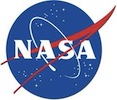Contact information
Please find below email addresses for the person responsible for different layers and datasets. Please first check our list of frequently asked questions before emailing.
- For GFED5 burned area please contact Yang Chen or James Randerson
- For the MODIS 500m burned area data (not a GFED product) please contact Louis Giglio
- For emissions please contact Guido van der Werf
- For historic emissions please contact Margreet van Marle
- For the Fire Atlas please contact Niels Andela
- For 500m emissions please contact Dave van Wees
Funding
Much of the fire science that benefitted GFED has been funded under grants to Randerson, Giglio, Morton, and Van der Werf from NASA and ESA, the European Research Council (ERC), Dutch Research Council (NWO), Schmidt Futures program, and the Gordon and Betty Moore Foundation. Maintaining and further developing GFED is not directly funded.



